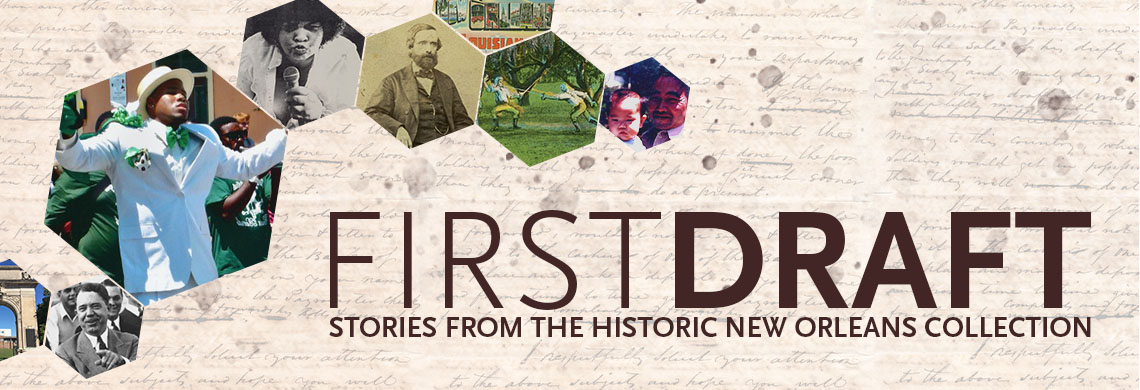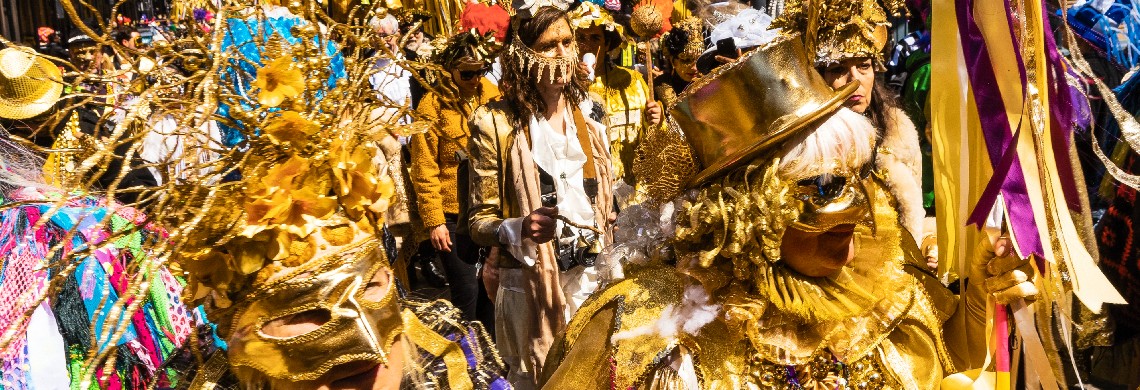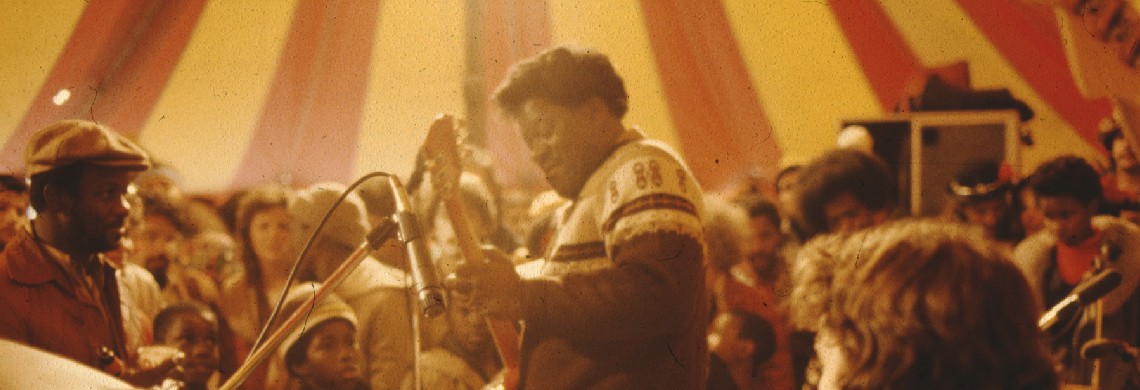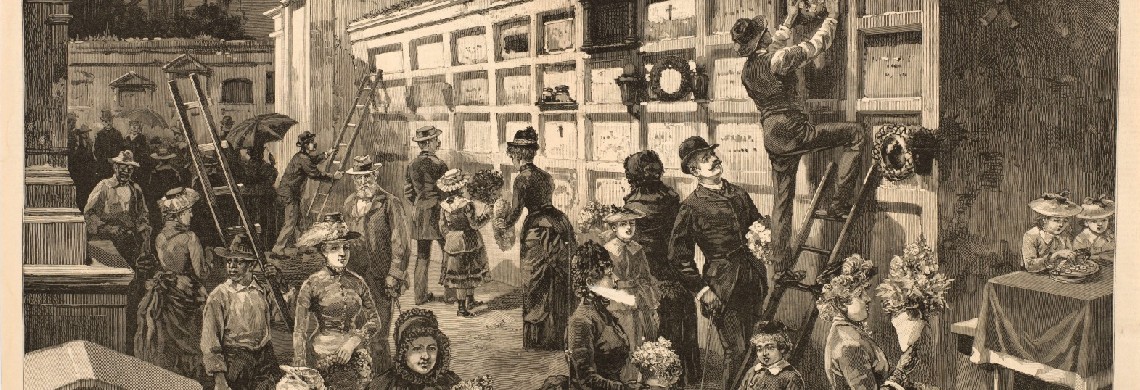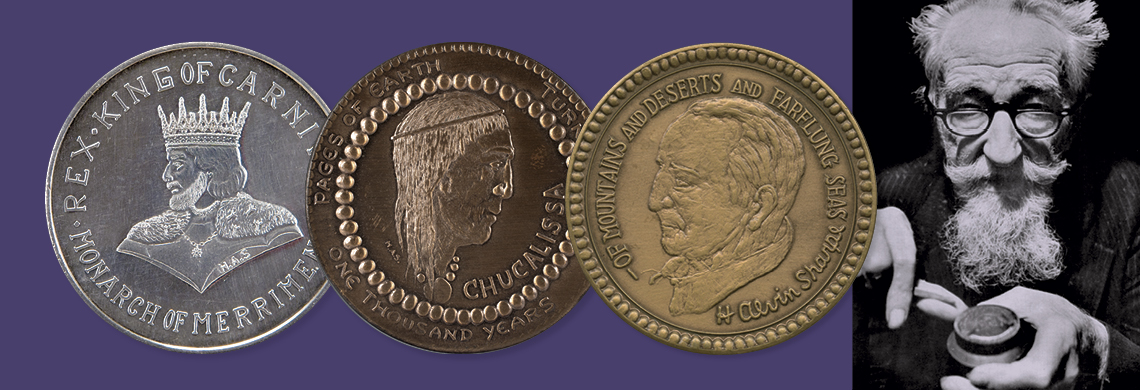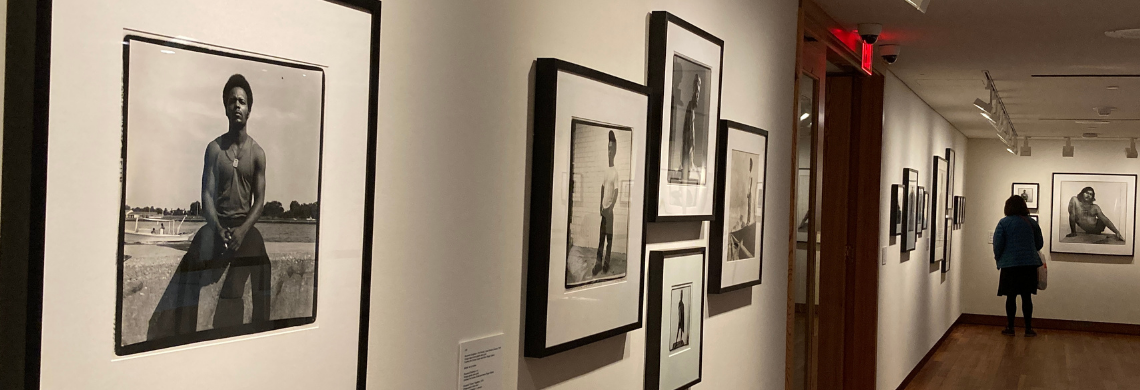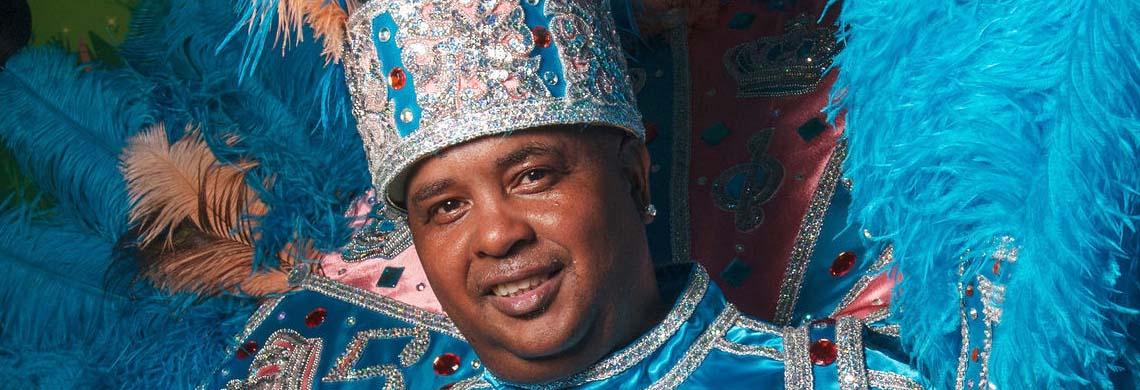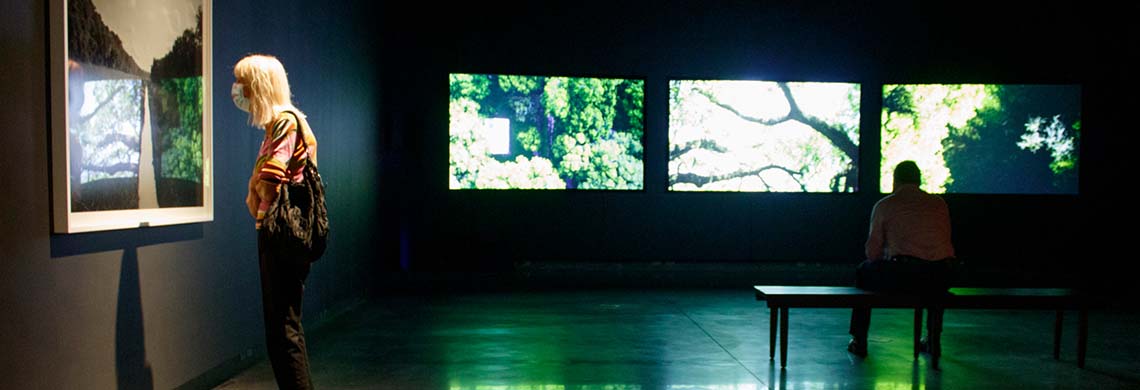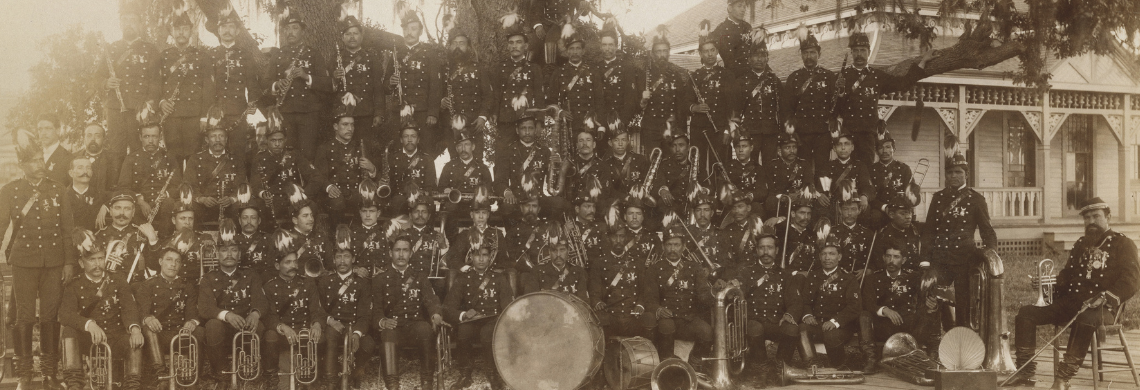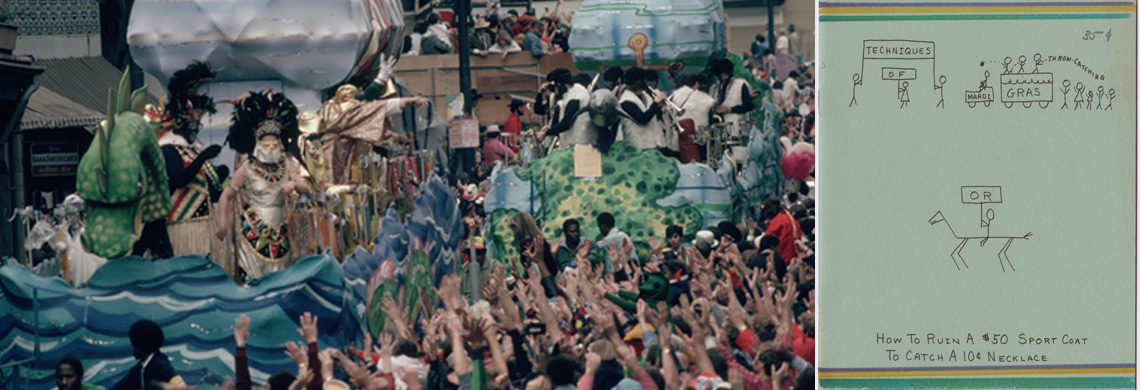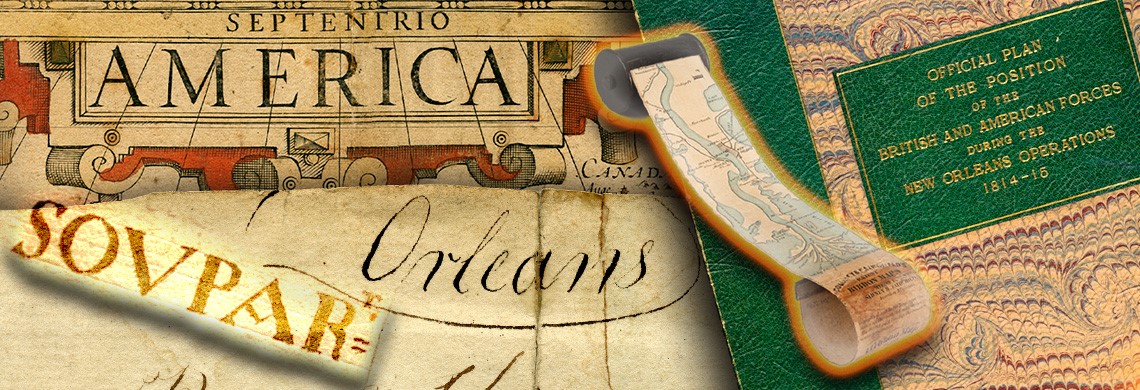The photography of Making Mardi Gras shows snapshots of Carnival through time, from Big Chiefs to ‘tit Rex.
In these liner notes to a playlist curated for THNOC, DJ Soul Sister, the “queen of rare groove,” leads a tour of Mardi Gras through music history and her memories as a native New Orleanian.
Ever wanted to take New Orleans History 101? While no intro course can be comprehensive, we've assembled 13 summaries of major themes, events, people, and places, with lots of links to further reading.
Before Sharpe’s invention helped birth the entire signature-throw industry, he sailed around the world, sold paintings, wrote poetry, and studied ancient history.
Prospect.5 spotlights the intimate eye of George Dureau, photographer
THNOC pays homage to the groundbreaking entertainer and radio host, who passed away in August 2021.
The photographer and art-world star makes his New Orleans debut at THNOC with a powerful pair of installations for Prospect.5.
A Prospect.5 exhibition delves into the story of the “Mexican Band” that captivated 1884 New Orleans
The 8th Cavalry Mexican Military Band was a sensation in 1884 New Orleans.
Forget public indecency. A 1960s pamphlet shares some timeless advice for catching throws—and we provide some updates for the 21st century.
Maps are more than visual representations of landscapes and geographic features; they’re also storytellers. Cartographers imprint their views of the world on the maps they make, leaving significant messages in tiny details.

